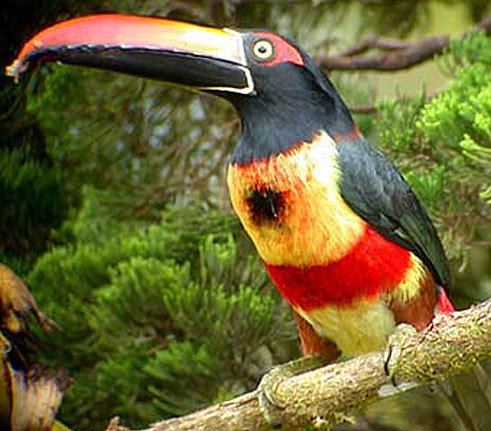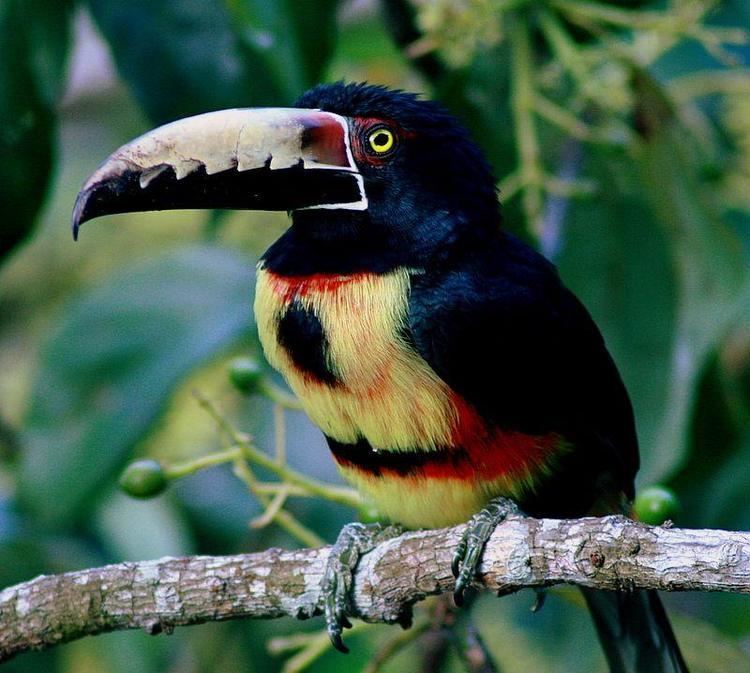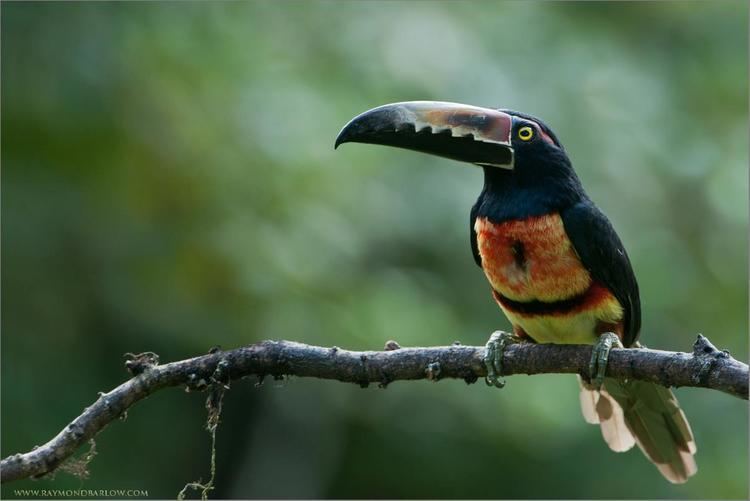Scientific name Pteroglossus | Higher classification Toucan | |
 | ||
Lower classifications Similar Collared aracari, Chestnut eared aracari, Green aracari | ||
An aracari or araçari ( /ˌɑːrəˈsɑːri/ AHR-ə-SAHR-ee, /ˌɑːrəˈsɑːri/ ARR-ə-SAHR-ee or /ˌɑːrəˈkɑːri/ ARR-ə-KAHR-ee) is any of the medium-sized toucans that, together with the saffron toucanet, make up the genus Pteroglossus.
Contents
- Two green aracari toucanetes beautful friendly birds
- Taxonomy and systematics
- Extant species
- Former species
- Behaviour and ecology
- Breeding
- Food and feeding
- Threats
- References

They are brightly plumaged and have enormous, contrastingly patterned bills. These birds are residents in forests and woodlands in the Neotropics.

Two green aracari toucanetes beautful friendly birds
Taxonomy and systematics
One species, the distinctive saffron toucanet, was formerly placed in the monotypic genus Baillonius, but Kimura et al. (2004) showed that it belongs in the genus Pteroglossus.
Extant species
The genus Pteroglossus has fourteen species considered to belong to the genus:
Former species
Some authorities, either presently or formerly, recognize additional species or subspecies as species belonging to the genus Pteroglossus including:
Behaviour and ecology
Some species of aracaris are unusual for toucans in that they roost socially throughout the year, up to six adults and fledged young sleeping in the same hole with tails folded over their backs.
Breeding
They are arboreal and nest in tree holes laying 2–4 white eggs.
Food and feeding
All the species are basically fruit-eating, but will take insects and other small prey.
Threats
The ischnoceran louse Austrophilopterus flavirostris is suspected to parasitize most if not all species of aracaris, with the possible exception of the green aracari (Price & Weckstein 2005).
